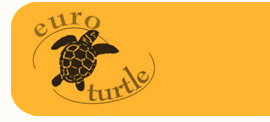|
Each year it is estimated that 6.4 million tons
of 'small' and 'large' garbage are dumped into the world's oceans
and seas. Besides looking unsightly, garbage represents a considerable
hazard to both people and marine wildlife. Entanglement and ingestion
of "Small Garbage", accounts for the deaths of over 100,000
sea mammals and sea turtles in the world each year.
Objective:
Students will discuss what sea turtles eat and observe how small
garbage resembles turtle food.
Materials:
-picture of jellyfish
(Google has pictures when you type in “picture of jellyfish”,
really colorful and interesting pictures can be found on: www.imagequest3d.com/photos/jellyfish/index.htm
)
-plastic bag
-balloon
-container of water
Introduction:
Inquire about prior knowledge.
“When sea turtles are hungry can they go to the grocery store?
Can they go to a restaurant? Where do they get their food? What
do you think they eat?”
Lesson:
List on paper ideas the students have about what sea turtles eat.
Make sure you write all of their ideas. You can then either read
a book or excerpt from a book with the information. Basically, sea
turtles eat jellyfish, seaweed, crabs, shrimp, snails, algae, and
mollusks. The above listed websites provide this information. Show
pictures of the listed food, especially pictures of jellyfish.
Review
the list; cross off the items turtles do not eat, add items that
they do eat.
Ask
who uses plastic bags, what they are used for, and what do you do
with them when you are finished using them?
Ask
who likes balloons? What happens to the balloon when it breaks?
Did you ever have a balloon fly away from you? What do you think
happens to it after it flies away?
Display
the bucket of water. Explain that this represents the Mediterranean.
Cut off a piece of the plastic bag. When the wind blows it falls
into the water. Place plastic in container of water. Break balloon.
Next place balloon in container of water. Ask students to imagine
that they are turtles swimming in this water (some type of object
representing a turtle can also be placed in the water). “What
do you think the turtle will eat? Why would the turtle eat it? What
do you think will happen to the turtle? Why is this a problem?”
Read
MEDASSET Educational Kit Activity Sheet #4 Threats to the Mediterranean.
Closure:
“What do you think we can do to prevent this problem from
happening? How can you protect the sea animals from this danger?
Is a balloon a good choice of something to use as a toy? Just say
“no” to balloons.” Help students understand that
sending balloons into the air can cause them to end up in the water
and therefore be a threat to all sea life. If time, students can
create a poster for no plastics and/or no balloons.
Assessment/Evaluation:
Teacher observation of participation
Student responses
If poster assigned, understanding of information as expressed in
poster
|





